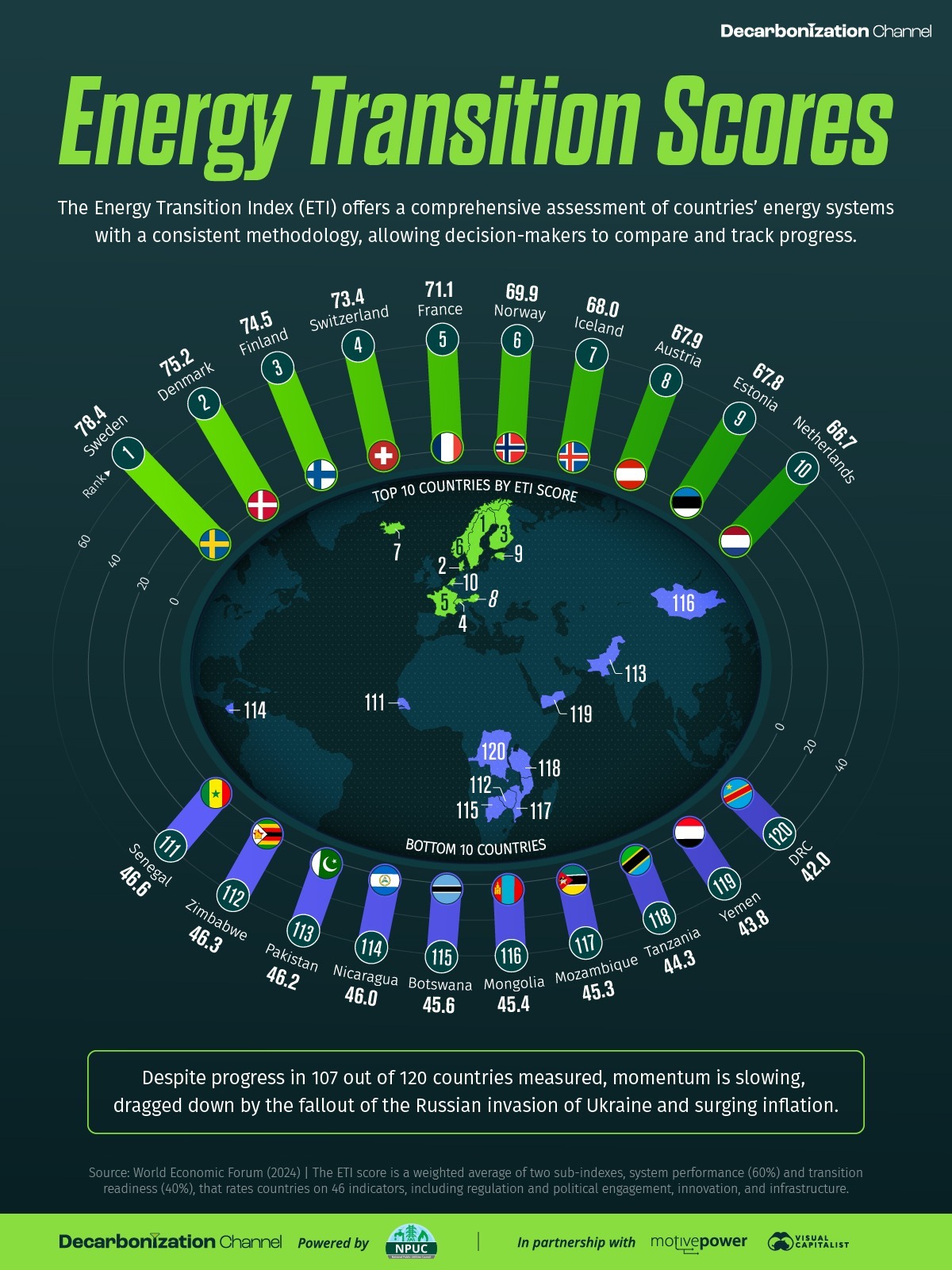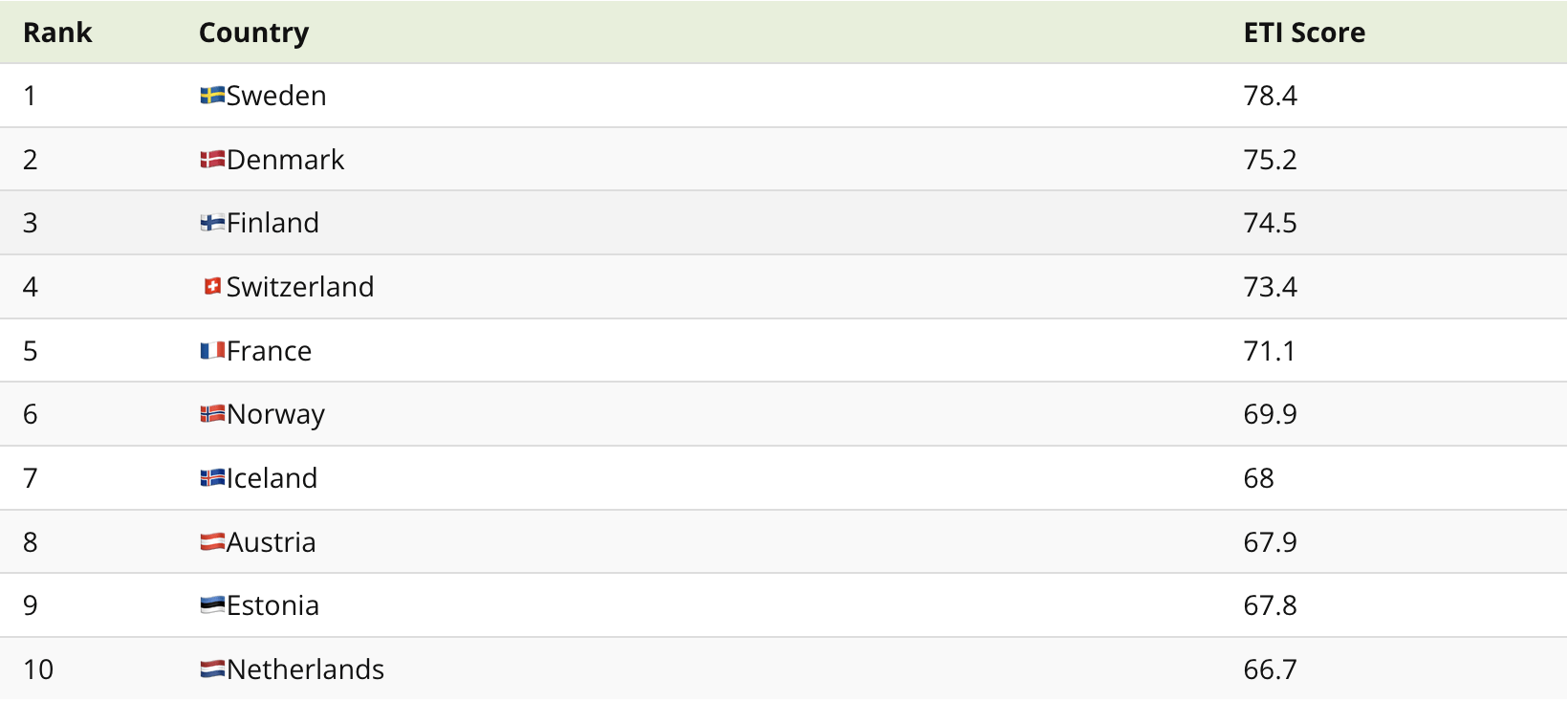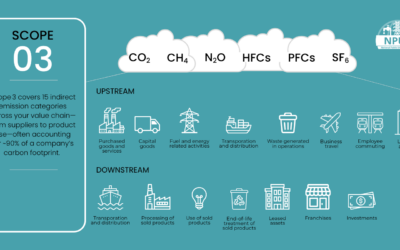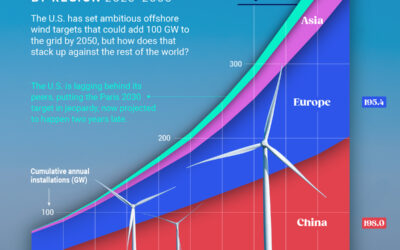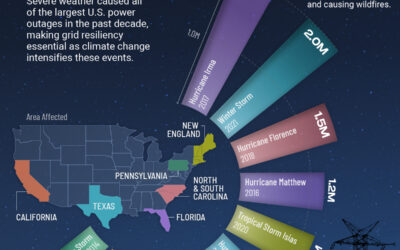Ranked: Energy Transition Scores by Country in 2024
Ranked: Energy Transition Scores by Country in 2024
The World Economic Forum (WEF) recently unveiled their 2024 Energy Transition Report, which assesses 120 countries around the world on their decarbonization efforts and ranks them on their Energy Transition Index (ETI).
This visualization, created in partnership with the National Public Utilities Council, shows the top 10 and bottom 10 countries based on their ETI scores.
How Does the ETI Work?
The ETI is a weighted average of two sub-indexes, system performance (60%) and transition readiness (40%), that rates countries on 46 indicators, including regulation and political engagement, innovation, and infrastructure.
Since the launch of the ETI in 2015, the global average increased from 53.4 to 56.8. However, momentum has slowed recently, and is down 0.3 points since 2022, due to the consequences of the Russian invasion of Ukraine, and surging inflation interest rates.
The Rankings
The highest energy transition scores come from advanced economies and the top three are Sweden, Denmark, and Finland. The lowest scores, however, come from sub-Saharan Africa.
However, even though sub-Saharan Africa has the lowest regional average score, individual countries are making significant progress. For example, Zimbabwe’s score has increased 33% since 2015, thanks to the increase in their hydropower capacity.
On the other hand, the ETIs of some advanced economies are declining, such as Norway, whose score decreased by 0.4 points over the past nine years. This decrease is due to rising electricity prices and a decline in renewable capacity buildout.
The Largest Economies and the Future
The world’s largest economy, the United States, has remained at 64.0 over the past year. China, however, has moved ahead to 64.1 from 2023 to 2024, thanks to significant growth in areas like batteries, EVs, and high-voltage transmission. The country also allocates the largest share of its GDP to investments in renewables, at 9%.
All countries must dramatically increase their ETI scores to prevent global warming above 1.5 degrees Celsius. While many countries, such as Norway, are stagnating in their progress, others, such as Zimbabwe, exceed expectations for their wealth, signaling the possibility for all countries to meet their climate targets.
Learn more about how electric utilities and the power sector can lead on the path toward decarbonization here.

